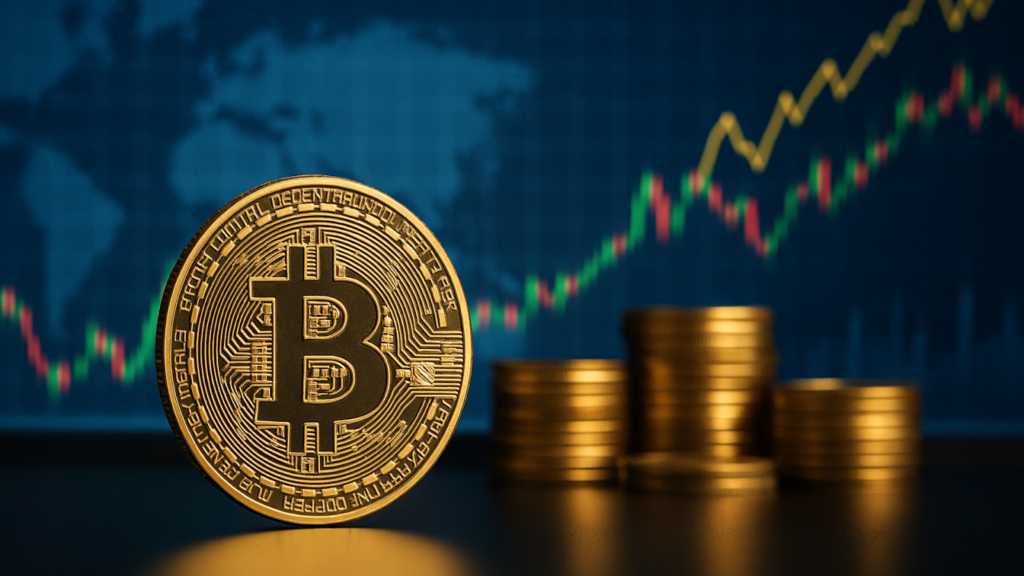Bitcoin is no longer the mysterious internet money it once was. In 2025, it has firmly established itself as a globally recognized financial asset, institutional investment vehicle, and decentralized hedge against inflation. But as its price dances between $65,000 and $90,000 and major institutions now own a chunk of its circulating supply, many retail investors are asking the same thing: is it still worth buying Bitcoin in 2025?
Whether you’re a long-term believer, a curious newcomer, or a skeptical trader, the real question is not just whether Bitcoin can go higher—but whether it’s still a good investment for you in this current market cycle.
A Different Bitcoin Than What We Knew Before
Bitcoin today isn’t the same asset it was even two years ago. The landscape has shifted dramatically. With spot ETFs approved in the U.S., sovereign wealth funds in Asia and the Middle East allocating capital to Bitcoin, and traditional banks offering BTC custody solutions, we’re no longer talking about fringe finance.
The 2024 halving drastically reduced miner rewards to 3.125 BTC, and the market adjusted accordingly. As scarcity increased, many expected a major bull run—and while BTC has shown strength, it hasn’t gone full parabolic yet. That’s led many to wonder: has the asset matured to a point where explosive growth is behind it?
According to several market analysts, that’s a premature conclusion.
What the Experts Are Saying
Financial strategists and crypto veterans alike remain cautiously optimistic. Analysts from leading on-chain analytics firms suggest that BTC’s fundamentals are stronger than ever. Daily active addresses, long-term holder accumulation, and hash rate have all reached record highs in 2025.
Some experts argue that Bitcoin is now entering a “Gold 2.0” phase, with projections placing it at a $2–3 trillion market cap over the next few years. That would put its price well above $150,000 if adoption continues across treasury reserves, pension funds, and central banks.
Leading macro investor Raoul Pal points out that Bitcoin is no longer just a hedge against inflation—it’s also a hedge against systemic failure. With growing geopolitical uncertainty and debt levels soaring globally, he believes Bitcoin’s relevance will only increase, not decrease.
Key Market Catalysts for 2025 and Beyond
A few standout factors will likely influence Bitcoin’s trajectory for the rest of 2025 and beyond:
1. Institutional Adoption Continues to Climb
Major asset managers now offer Bitcoin exposure via ETFs and mutual funds. Pension funds are cautiously entering the market. This institutional layer adds credibility and steady demand to the ecosystem.
2. Global Regulation is Clarifying
Rather than banning Bitcoin outright, most governments have chosen to regulate it. While some regions still face uncertainty, jurisdictions like the EU, UAE, Singapore, and Hong Kong are creating pro-crypto environments. The U.S. has also clarified its tax and custody framework for BTC in 2025.
3. Growing Use of Bitcoin in Remittance and Reserve Strategies
Several developing nations are exploring Bitcoin as a reserve asset. The growing remittance infrastructure powered by Lightning Network is also expanding its use case beyond speculation.
4. The Role of ETFs and TradFi Integration
Spot Bitcoin ETFs in the U.S. have funneled billions into BTC since their approval. This has changed the supply-demand dynamics and may continue fueling demand through passive investments.
But What About the Risks?
No investment is without risk—especially not Bitcoin. Price volatility remains a reality. One week BTC can be up 15%, the next down 10%. There’s also the looming threat of overregulation in specific regions, which could temporarily impact price and liquidity.
Another concern is market saturation. Some investors believe the “easy money” has already been made and are turning to altcoins or newer blockchain ecosystems in hopes of higher upside. While those assets may offer higher returns, they often come with higher risk, lesser liquidity, and unproven fundamentals.
Finally, technological disruption can’t be ignored. Layer-2 solutions, Ethereum, Solana, and even newer ecosystems like Celestia or Fuel are evolving rapidly. While Bitcoin has the first-mover advantage and unmatched decentralization, it must still evolve or risk becoming outdated in the fast-paced Web3 environment.
Is Bitcoin Still a Good Buy for Retail Investors?
Despite the institutional influx, retail investors still form a massive part of the Bitcoin ecosystem. Whether you’re DCA-ing $50 a week or looking to allocate a larger sum, your strategy should match your risk tolerance and time horizon.
For long-term holders, Bitcoin is still seen as one of the best asymmetric bets in finance. With capped supply, increasing utility via Layer-2s, and growing institutional demand, the potential upside remains compelling—even if it takes years to fully play out.
Traders, on the other hand, need to navigate carefully. While Bitcoin does provide trading opportunities in its volatile swings, those without a clear plan often get shaken out during market dips.
Expert Tip: Many investors are now pairing Bitcoin with yield-generating strategies. Holding BTC in platforms that allow you to earn passive income or participate in wrapped BTC DeFi strategies is becoming a common method to reduce opportunity costs.
Final Thoughts: So, Should You Still Buy Bitcoin in 2025?
If you believe in decentralization, scarcity, and the future of digital finance, then Bitcoin still has a lot to offer. It may not 10x in a year like in its early days, but even a 2–3x from today’s prices in the next market cycle would beat most traditional investments.
In other words, Bitcoin’s days of massive adoption aren’t over—they may just be entering a new, more mature phase. It’s less about hype now, and more about long-term utility, global macro trends, and conviction.
Takeaway Summary
Bitcoin in 2025 is no longer a speculative asset—it’s a maturing financial instrument integrated into global portfolios.
Despite some risks, its scarcity, institutional backing, and long-term adoption curve still make it a valuable investment consideration.
Whether you’re new or seasoned, BTC remains a strong contender for long-term portfolio growth.


